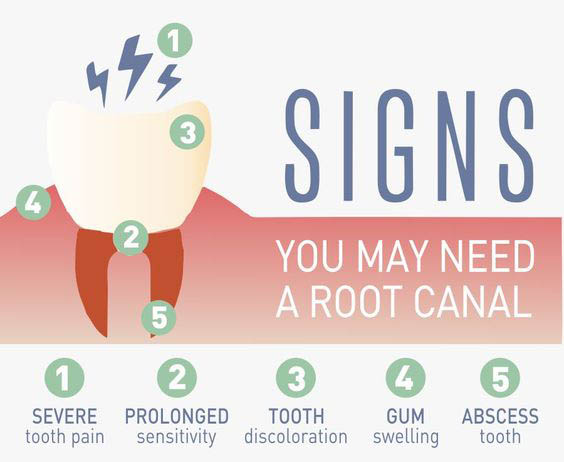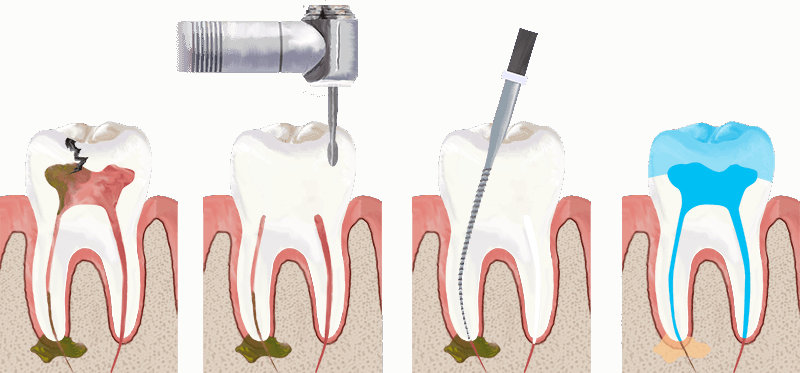Root Canal Treatment

Save your natural tooth….while you can!!
A ‘root canal’ refers to a natural cavity or space within the tooth. It houses the pulp chamber which provides blood supply, nutrients and nerves to each tooth.
A cavity in a tooth leaves an opening allowing the micro-organisms to penetrate the pulp chamber which leads to inflammation, sensitivity & pain. If left untreated, it may progress to an abscess at the base of the tooth leading to further complications like severe pain and swelling.
A root canal is a procedure done to treat and save a badly infected tooth, or one that had significant decay and was doomed to be extracted. In the current scenario, most of the badly or grossly damaged teeth can be salvaged by this wonderful procedure. Root canal procedure is a multi-stage procedure which involves removal of the infected pulp/nerve tissue, followed by cleaning, shaping and sealing of the pulp chamber.
When do you need root canal treatment?

- Sudden spontaneous pain or continuous throbbing pain or tenderness while biting.
- Prolonged sensitivity to hot and cold.
- Severe decay or an injury that creates an abscess (infection) in the bone.
At Dr. Khandpur’s Dental Centre, we carry out the procedure with utmost precision using magnification devices which provides enhanced view of the operating field, thus helping in a more accurate diagnosis and treatment.
Procedural Steps in Root Canal Treatment

- The first step in a root canal is to obtain access to the nerve and removing the infected pulp tissue. This is accomplished by establishing a small access opening on the top of the tooth crown. It is always done under a local anesthesia.
- The length of the root canal is determined and the infected pulp is removed.
- At the same visit, the canal where the nerve is located is reshaped and prepared to accept the specific root canal filling material.
- In the current scenario, a root canal treatment can be completed in a single visit. However, the number of visits may increase depending upon the infection and complexity of the tooth anatomy.
- Sealing of the root canal with gutta-percha is the final step in the root canal procedure. This prevents any further contamination of the tooth and provides for a hermetic seal from the oral and apical environment.
If treated early, root canal therapy is not uncomfortable. The use of local anesthetics has made the entire procedure can be totally painless.
Sometimes when there has been long standing infection or abscess, there may be some soreness or tenderness associated with the root canal visit. However, the discomfort can easily be minimized with the use of analgesics as prescribed and antibiotics if necessary. The root canal treatment is followed up by post-obturation restoration and a crown. The type of restoration and crown depends on various clinical factors.
